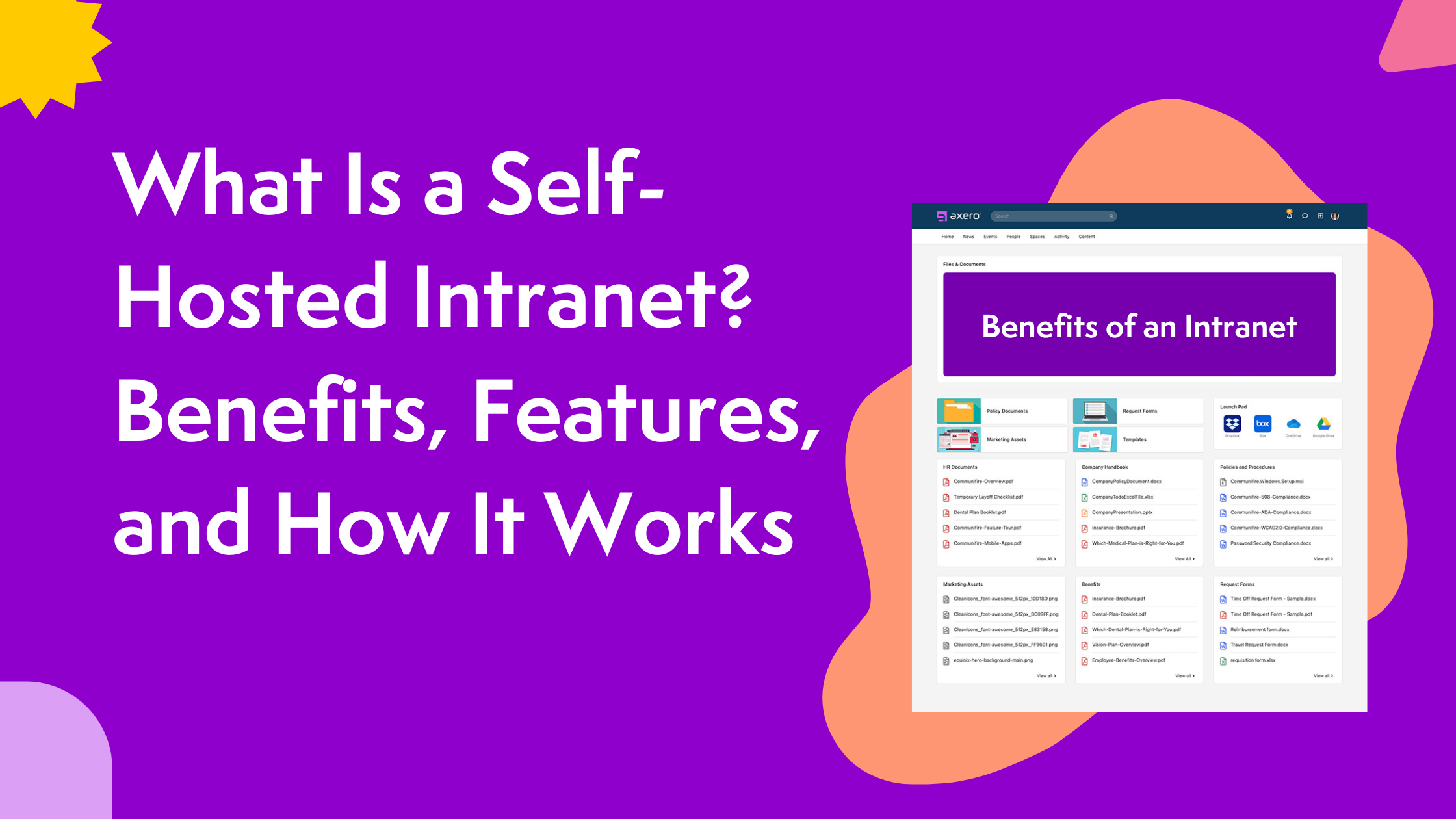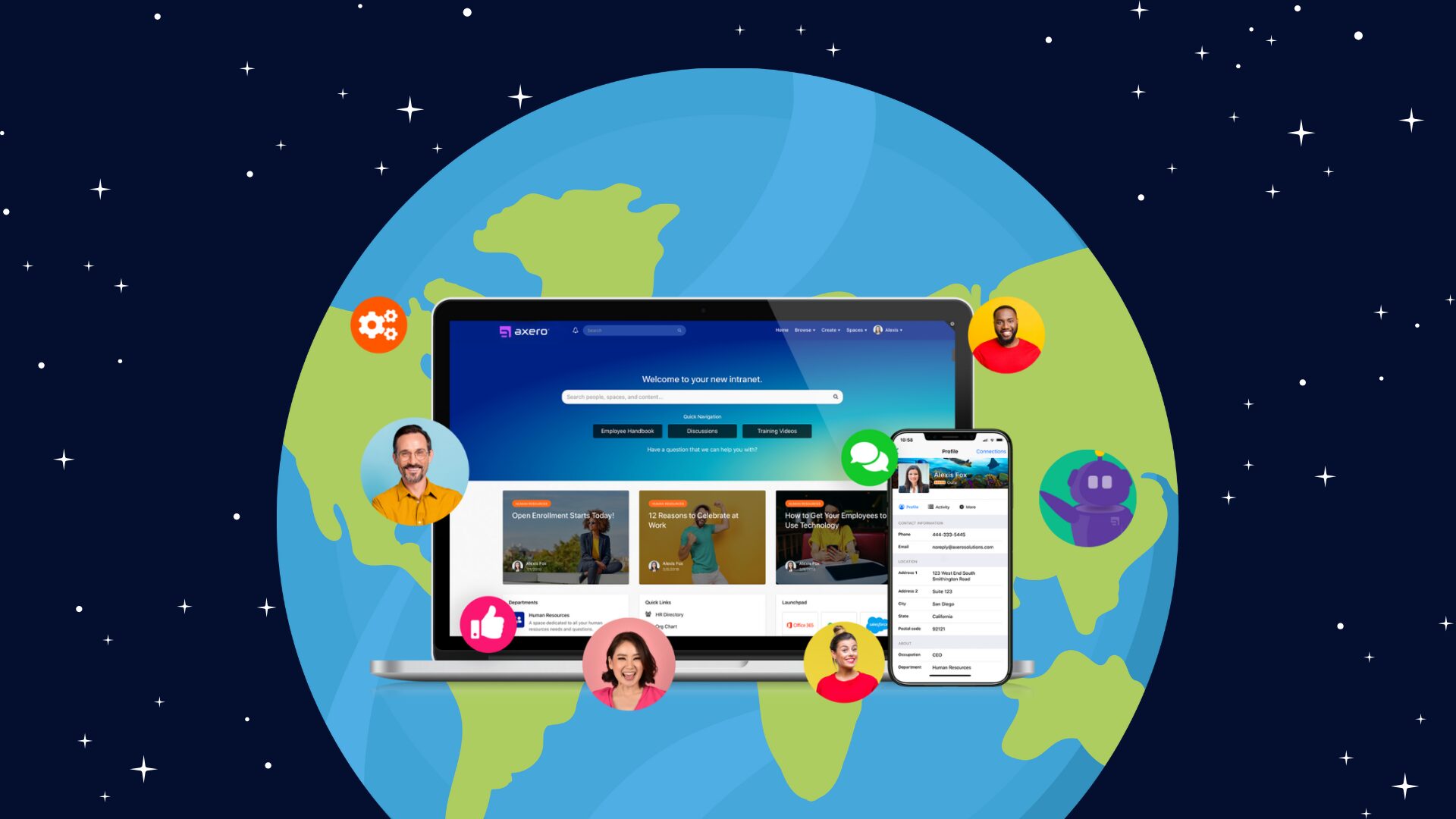Intranet without workspace.
— Software Developer
Now that you can hopefully find your work files, it’s time to ask the next question. What do you do with those files? And where do you do it?
In the previous post, we talked about improving navigation and search on your intranet and using good filing habits. Theoretically, all of this can be done with the old-fashioned, static intranet with no social features. In practice, however, once you’ve retrieved your files, you’ll face a whole new set of challenges.
Are you missing any important context—links, notes, questions, comments, discussion threads—relating to your project? And how do you keep your files searchable, collaborate, and get feedback while your work is in progress?
That’s today’s biggest challenge at work, and I will answer it by unequivocally advocating for going social.
A social intranet is designed to be your workspace. Like your phone and your desk, it’s never the same place twice. It lets you upload files, build documents, manage projects, organize and take part in meetings and events, take notes, brainstorm ideas, ask and answer questions. It has a space for everything you want to do at work—alone or as part of a team. It’s a place for coworkers and teams to interact and see each other’s work.
The early adopter phase of the social intranets is over. You no longer need to be a trailblazer to have one. There are several time-tested well-designed user-friendly solutions on the market, and one of them is right for you.
They are not free. However, they pay for themselves many times over in higher productivity and engagement. But let’s set that argument aside for a moment. Instead, let’s look at the opportunity cost of an “intranet without workspace.”
The amount of time white-collar workers waste in the office is legendary. According to various studies, we spend roughly one-third of our workday in meetings and another third on email.
Waste of productive time is only half of the story. The other half is the stress associated with switching tasks and the sense of impending doom that comes from the never-ending meetings and the exploding inbox.
A 2012 study of US Army civilian employees measured both multitasking and stress caused by email. The employees in the study wore heart rate monitors while an activity-logging software recorded how many times they switched document and application windows.
For the first three days, the employees used email as usual. For the next five days, no email was allowed. Any urgent and important news would be delivered by phone or in-person. Not surprisingly, without email, multitasking behavior changed dramatically: from an average of thirty-seven window switches per hour down to eighteen! Stress, as measured by the heart rate variability, also decreased.
In fact, some European governments are taking email overload so seriously that they limit the hours during which employees can send or receive work-related email. On January 1, 2017, a “right to disconnect” law went into effect in France. Germany had enacted a similar one in 2014.
If your intranet doesn’t allow for collaboration and discussion, your email becomes your workspace. Unfortunately, your email box was never designed to organize your work and is ill-suited to this task. Hence, your productivity goes down, and your stress goes up. And the next thing you know, Big Brother is watching over your email etiquette.
Runaway meetings are another symptom of an intranet without workspace. If you can’t share information, ask questions, and resolve problems in real time, you will need to rope people in, whether or not they are ready and willing to contribute. By a conservative estimate, half of the time spent in meetings is unproductive.
In 2012, McKinsey & Company predicted that social intranet software could save companies 20-25% of white-collar labor costs. That calculation included:
7.0-8.0% less time spent on email.
5.5-6.5% less time spent searching and gathering information.
3.5-5.0% less time spent in staff meetings.
4.0-6.0% less time spent on role-specific tasks.
As these findings show, a social intranet will not eliminate all redundancy in the workplace. However, even small improvements in a few tasks performed by a majority of the workforce will add up to a staggering figure.
According to McKinsey Global Institute’s report, “The social economy: Unlocking value and productivity through social technologies,” the potential savings are $900 billion to $1.3 trillion annually. And that’s in just four verticals: consumer packaged goods, retail financial services, advanced manufacturing, and professional services.
The value of a social intranet is not limited to these sectors or white-collar employees. In our humble experience at Axero, workplaces as diverse as retail shops, entertainment platforms, and government intranets have all benefited from going social.
So, if a trillion dollars is up for grabs, what is keeping employers from jumping in?
You guessed it. Fear. Uncertainty. Doubt.
Before signing on to Axero, our customers’ biggest fear is that employees would misbehave. “You don’t know our people, Tim. It’s going to be the Wild West! Profanity! Racial slurs! Inappropriate content! We’ll be lucky if they don’t kill each other!”
In reality, employers have more control over a social intranet than they do over email. But they rarely need to use it. Imagine you were friends with your boss on Facebook. How many drunken photos of yourself would you post?
Another fear is that a social intranet is too distracting. Again, consider the alternative. As far as distractions go, your intranet has many advantages over email. No spam. Clear discussion threads. Faster search. Direct access to files. And personal interactions are limited to coworkers. Although an intranet does not replace email, it cuts down the size of your inbox and the time you spend in it. On balance, it makes for a less distracting workday.
Then there’s the opposite fear: What if people don’t use it?
That’s what some pundits said about the first camera phone. Now we know better. People will use anything they find instantly gratifying. Like when someone says, “Good job!” Or, “Here’s the link you’ve been looking for.” Or, my favorite: seeing employees self-organize, help each other, and take care of business.
If your intranet is where things are happening, your people will be there, too. Use the power of authority and personal example to set the trend and let your people follow. If they’ve been burned by a poorly chosen system before, there might be negativity to overcome. Be patient. As Facebook says, “Likers gonna like.”
So, here you go. An antisocial intranet without workspace is not a challenge worth taking on. But learning about modern technology and adapting it to your needs is.
_____
If you need help getting started, check out How to Make Your Intranet Work for You.
If you like to learn about best places to work, you might like my book, because it’s full of ones you haven’t seen.












 info@axerosolutions.com
info@axerosolutions.com 1-855-AXERO-55
1-855-AXERO-55


